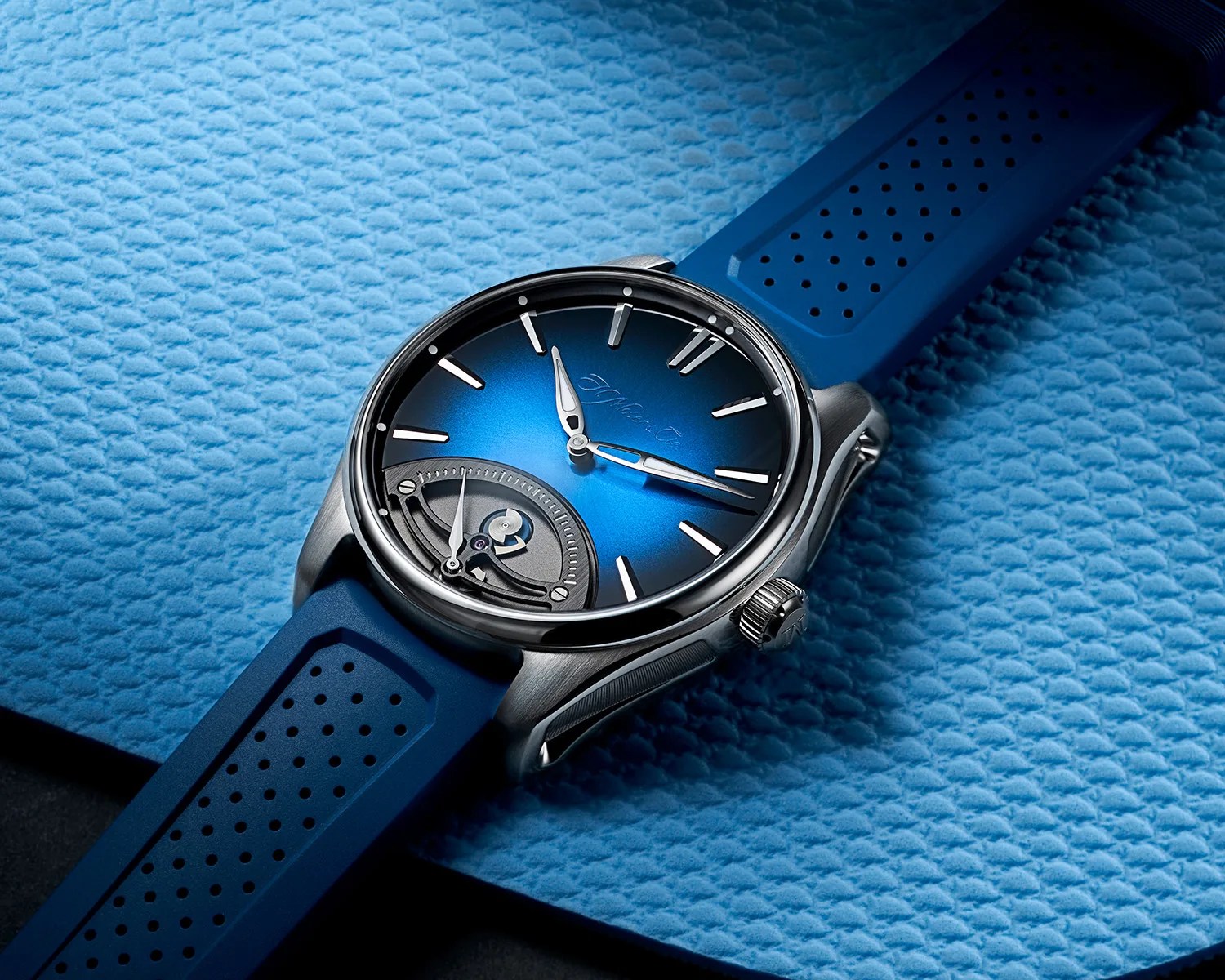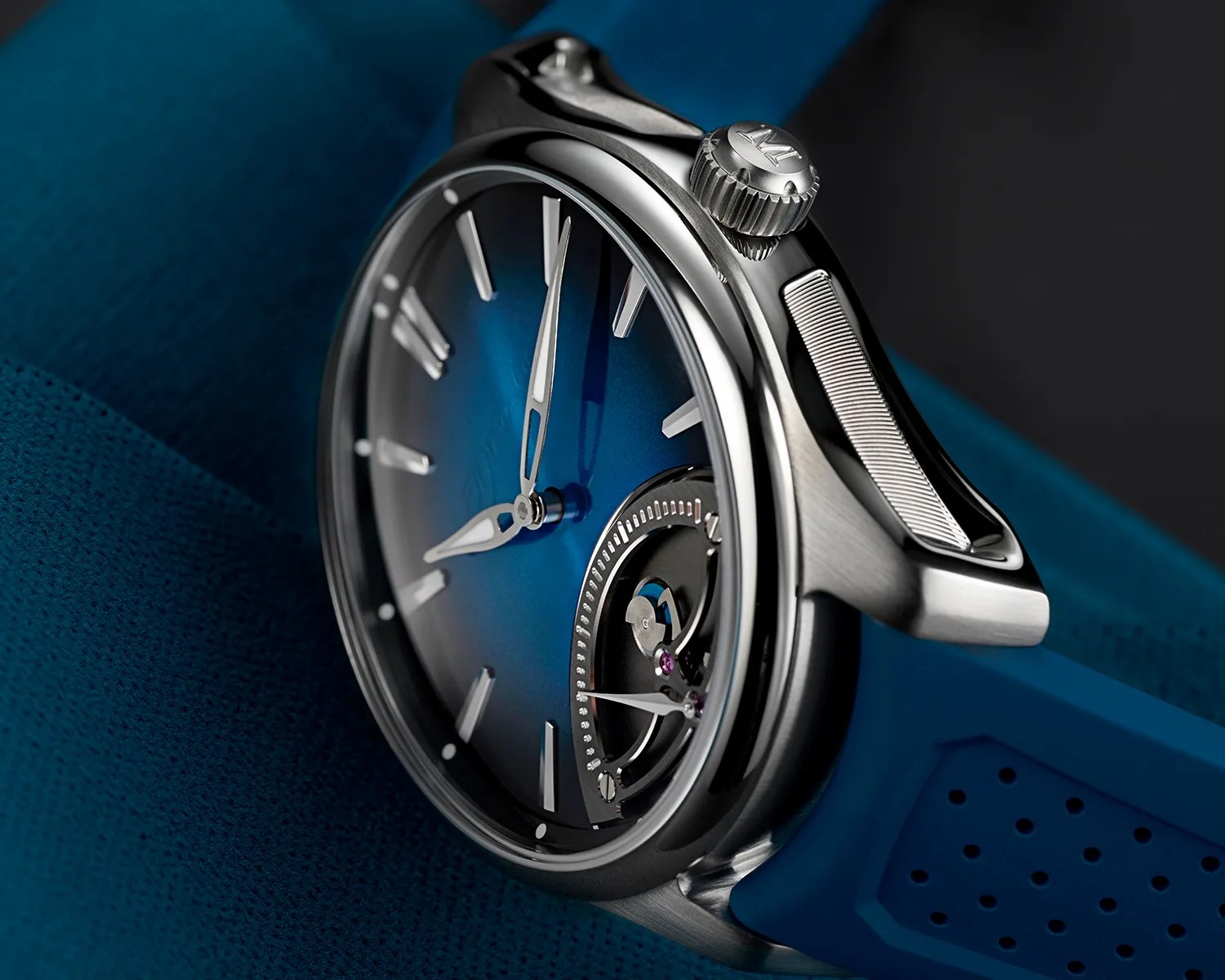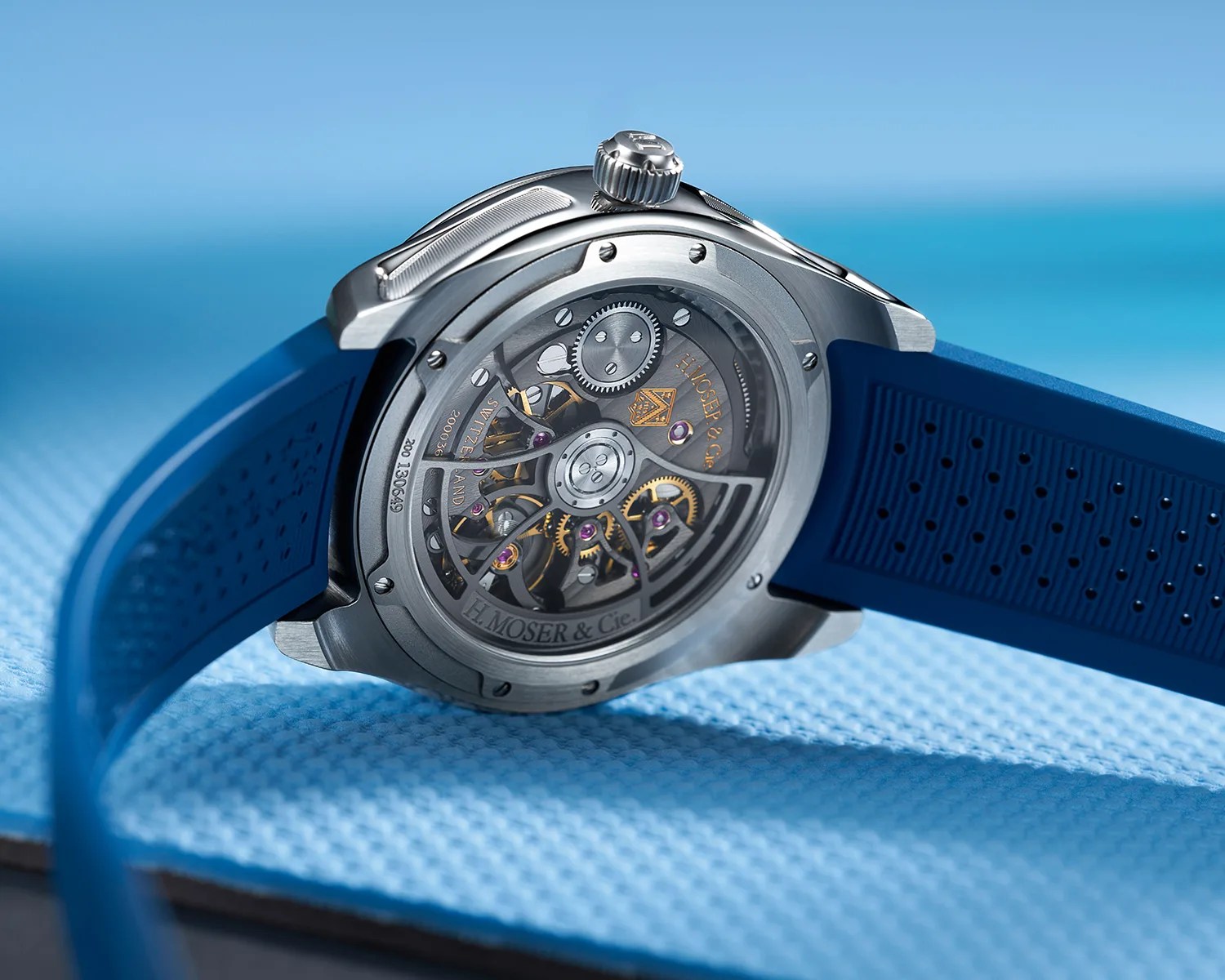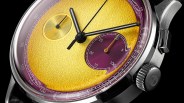Most sports watches fit neatly into a handful of firmly established buckets. You’ve got your dive watches, your racing chronographs, your integrated bracelet sports watches, etc.
The H. Moser & Cie. Pioneer, by contrast, isn’t so easily pigeonholed.
It’s as elegant as a dress watch with its top-notch finishing, minimalist sunburst dial and leaf-shaped hands, but it’s still clearly designed for more raucous activity thanks to its perforated rubber strap, 120m of water resistance and discreetly sporty, grille-like cutouts in the sides of the case.
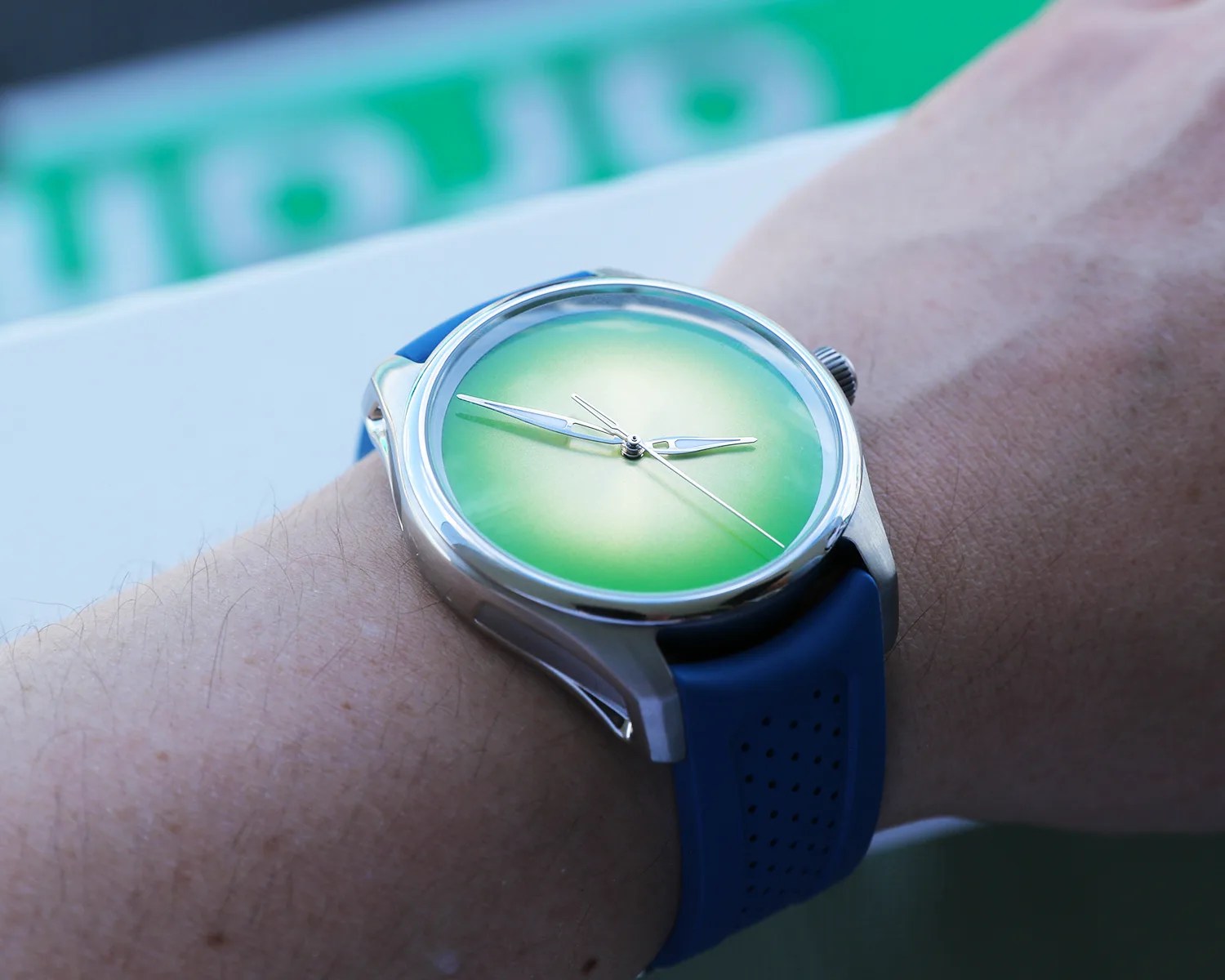
But the standout feature of the Pioneer line is the haute horological engines that power the watches. These are Mosers at the end of the day, which means they’re impressively crafted by a small-scale independent brand that plays in the same sandbox as brands like F.P. Journe and MB&F.
Because of the Pioneer’s robust case design, Moser is able to fashion high-horological creations far more durable than what is typically seen. Where else can you get a skeletonized dial with a cylindrical tourbillon that will still function 120m underwater?
The brand’s latest Pioneer model adds to this legacy, as it features a rarely-seen complication that simultaneously makes the watch a horological heavyweight and the sportiest-looking Moser Pioneer yet.
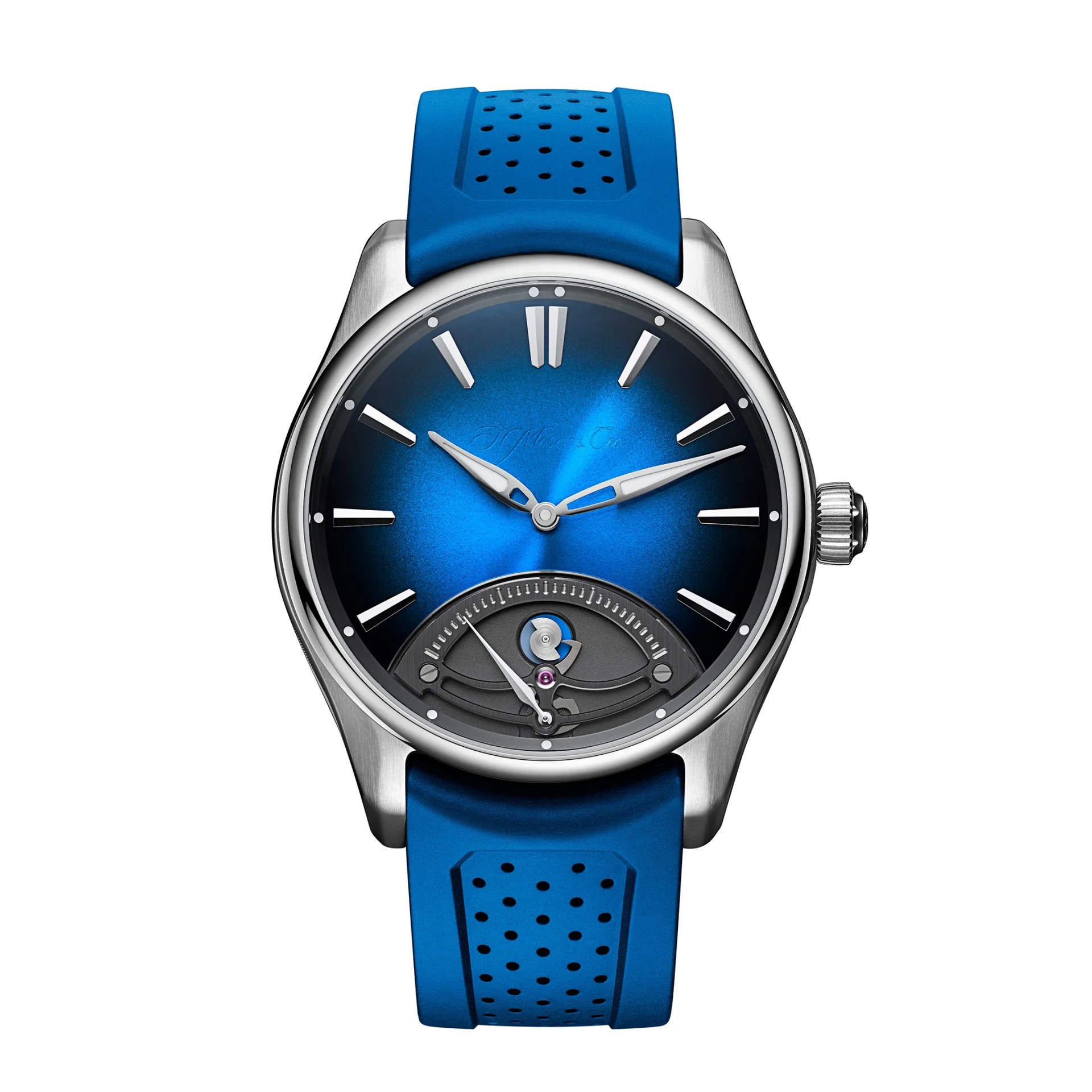 H. Moser & Cie.
H. Moser & Cie.
